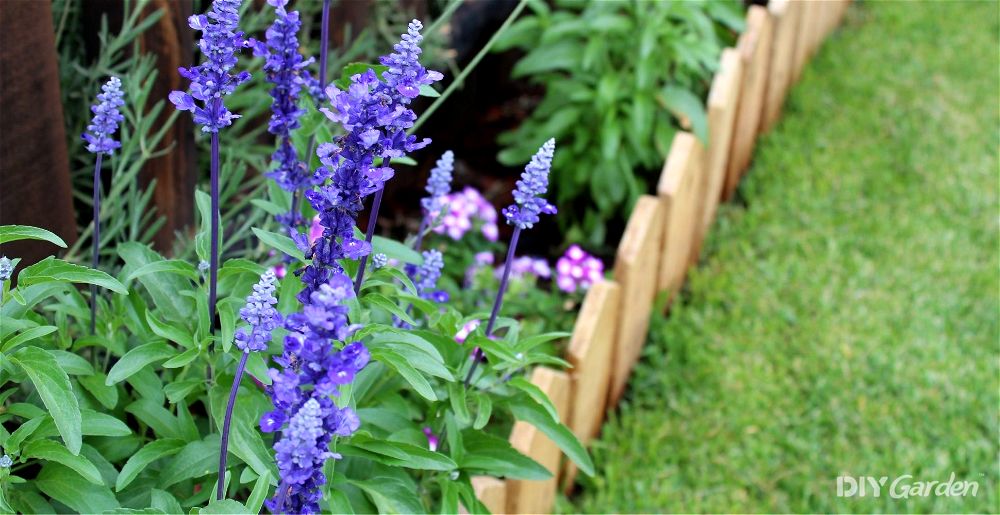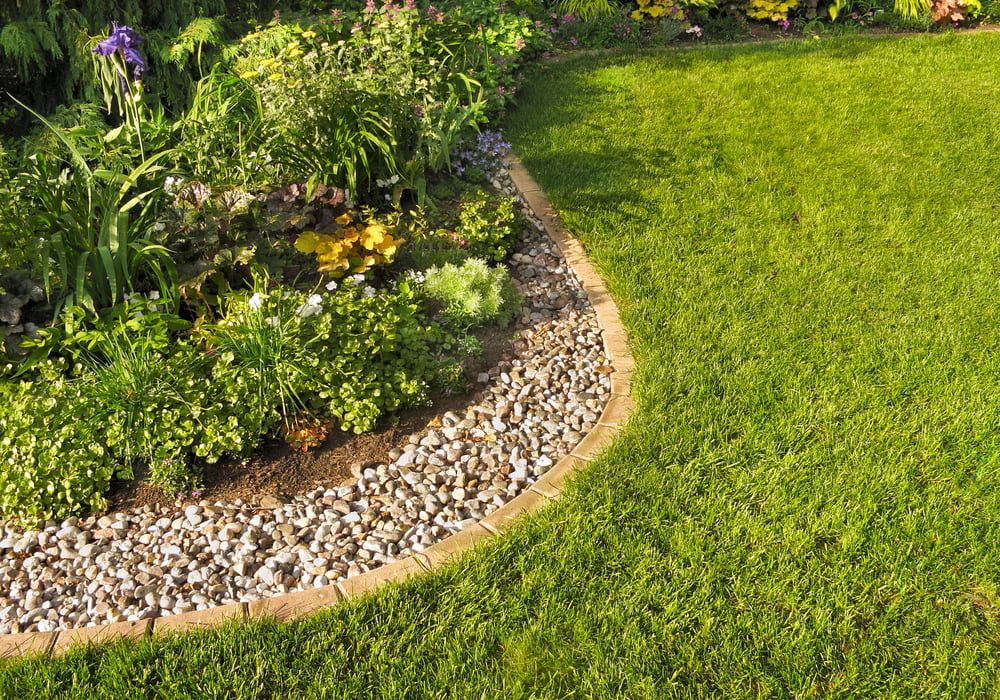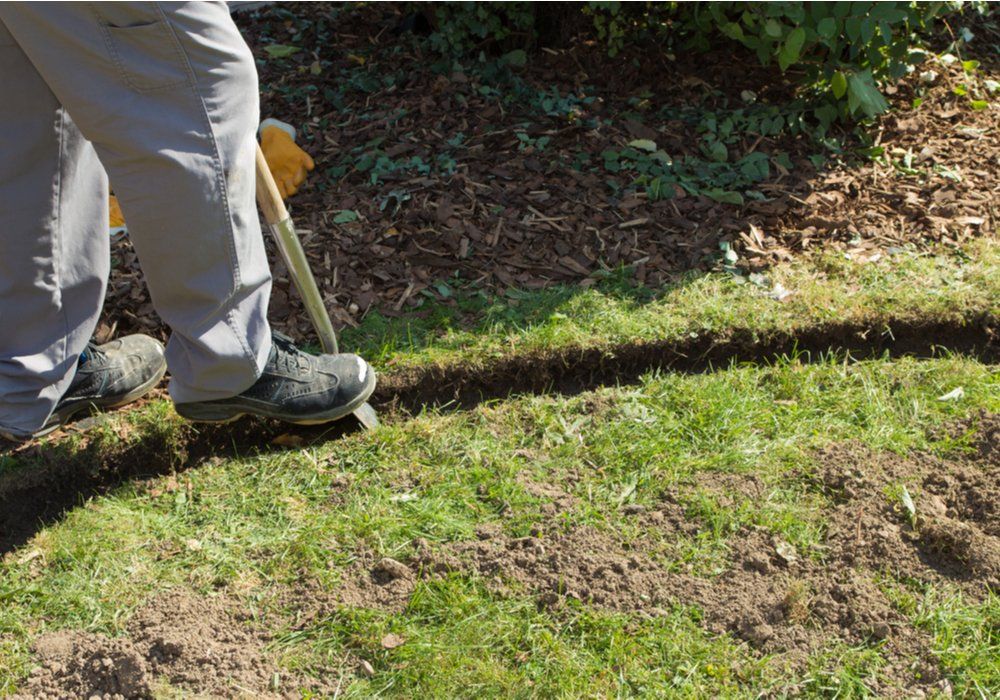
The Ultimate Guide to Creating a Garden Border
When it comes to creating a new garden border, you’ll need to consider a few things: the position and shape of the border itself, as well as what to plant. With a bit of planning, you’ll have an enviable garden border that looks effortlessly striking throughout the different seasons.
On this page, we’ll cover all the information you need – we’ll walk you through creating a new border, choosing the best shape for your garden, and selecting new plants that will set the whole thing off.
10 Easy Steps to Create a Garden Border
1. Plan the Border Location
Decide on a location for your garden border. Consider how shady or sunny the border will be. This will determine the types of plant you should choose and where to place them. If you want specific sun-loving plants, you may need to position your garden border accordingly.
You’ll find plenty of information about choosing the right plants, based on the location of your border, at the end of this page.
2. Mark Out the Border Edge
Before you start digging, mark out the location of your new border using a hose, measuring tape or spray chalk. Take your time and think about the desired shape – ensure it will suit the size and layout of your garden. Curved border edges can give the illusion of more space, but straight edges give a crisper finish.
You’ll find loads of advice about choosing the right border shape further down the page.
Top tip: A hose can make it easier to mark a curved border and a measuring tape is useful for straight edges.
3. Slice Through the Grass
Use a spade or turf cutter to start digging through the grass within the border area. Follow the contours of the hose or measuring tape, and push the cutter the whole way into the ground. Create a trench around 4 – 5 cm deep to separate your new garden border from the lawn.
4. Strip the Turf
Once the grass has been dislodged, you can begin removing it. Use a spade to cut the grass into small squares, then insert the blade under the roots to strip each square off. Ideally, you should remove no more than 5 cm of soil.
5. Stack Up Removed Turf
The strips of turf which have been removed from the border area can be saved and used at a later date. Stack them on top of each other with the grass side down. The grass will eventually die, leaving nutrient-rich soil that can be dug into garden borders to help plants thrive.
6. Create a Defined Edge
Now is the time to really define that crisp border edge – it might be looking a little messy up until this point. Use a turf cutter to create a sharp edge and frequently step back to reassess. You want to make sure you’re achieving a good shape.
If you wish, you can separate the border from the lawn by using a roll of metal lawn edging or sleeper edging. Raised edges like this can create a “mowing strip”, making it easy to run a lawn mower alongside the edge of the border.
7. Remove Debris and Roots
Using a garden fork, remove any debris, large stones and roots from the ground. Push the fork prongs down to the full depth to bring up any debris. The fork can also be used to break up large clods of soil. Finish off by using a rake to remove smaller debris.
8. Spread Organic Matter
Next, spread garden compost or mulching materials across the surface of your border. Create a 5 cm layer of organic matter, then mix it into the soil evenly.
9. Consider Plant Placement
Take the time to arrange plants; place the pots where you would like them to go. Keep the plants in their pots so that they’re easy to move and reposition. Remember to keep in mind the areas that get the most sunlight, and place your sun-loving plants there.
You’ll need to think about spacing – which plants require more room and air circulation? This will help ensure your border is full of healthy plants that will grow happily, even when they reach their mature size. You should also note the colours and sizes of each plant, and how they look alongside each other, to achieve your desired finish.
Top tip: Including some evergreen plants will ensure your garden border has seasonal interest even in winter.
10. Get Planting
Dig a hole for each plant, slightly deeper and wider than the pot the plant is currently in. Remove the plant from its pot and place it into the soil, filling any gaps. Water the area thoroughly.
The Best Border Shape for Your Garden
When planning a new border, the border shape is one of the first things you should consider. The best shape for your plant border will be determined by the layout and size of your garden, as well as your preferred look.
Here’s the low-down on the different border shapes:
Straight Borders
Straight garden borders are smart and low maintenance, giving your garden a crisp finish. Straight borders are also the best option if you want narrow borders. If you like the look of straight garden borders but prefer a more relaxed vibe, opt for softer plants like ornamental grasses.
The downside to straight garden borders is that they can make your outdoor space feel smaller. In small gardens, consider a curved border instead – this will blur partitions and create more of a blended landscape.
Curved Borders
Sweeping curved edges will make your garden feel larger and offer a more relaxed finish. They can also make the garden feel more private, creating secluded areas to sit and relax.
Curved garden borders can be slightly harder to maintain than straight garden borders because it’s important that the curve remains smooth and uninterrupted.
Undulating Borders
Undulating garden beds can really add interest to the space and create a more contemporary look. However, they’re perhaps the hardest borders to get looking right.
This style of border rises and falls to add depth to your garden – take time to plan its shape! Keep the curves gentle rather than pronounced in order to make mowing easier.
Choosing Which Plants to Put in Your Border
The position of your garden border will determine which new plants you should choose.
You’ll need to assess if the border receives full sun, partial sun, or is mostly shaded. It’s also important to integrate some evergreen shrubs so that your border will have year-round interest.
Here are the best plants to choose depending on your border location:
Plants for Shady Borders
If your garden border is in the shade, these are some dynamic shade-loving plants that will thrive as part of your planting scheme.
Ferns
Ferns bring a graceful and peaceful feel to the garden. They do very well in shady garden borders. Hart’s Tongue Fern, Soft Field Fern and Hard Fern all thrive in partial sun or shady areas.
Hydrangea Aspera
Hydrangea Aspera can grow up to 3 m tall and produce pink, purple or white flowers in the late summer. They thrive in a range of conditions including partial shade.
Ornamental Grasses
Ornamental grasses are beautifully soothing in a gentle breeze and are relatively low maintenance. Japanese forest grass and sedge plants can withstand either full or partial light conditions.
Plants for Sunny Borders
For garden borders that are in a sunny position, consider these options to make the most of the location.
Evening Primrose
Evening primrose requires a sunny position with plenty of space to spread out. These have bright golden yellow flowers that will liven up any border. This flower requires very little maintenance.
Fruits and Vegetables
If you’ve always dreamed of your own vegetable patch, a sunny border is the perfect spot. Lettuce, carrots, kale, cucumbers and asparagus will all thrive in a sunny patch of garden.
Planting veg in garden borders is a great way to utilise space in urban gardens – you don’t have to own an allotment to grow your own crops!
Veronica (Speedwell)
Speedwell is a bushy, violet-blue perennial that looks best between midsummer and autumn. These love sunshine although they will also tolerate light shade.
Plants for Patio Borders
Scented plants are great for patio borders, igniting the senses with different fragrances. Consider some of the following as part of your patio border planting scheme.
Lavender
Sweet, delicate and calming, lavender is perfect for your patio borders. It’s also evergreen, so will give structure to your patio year-round; plus, it will encourage beneficial wildlife and attract pollinators like bees to your garden. Lavender prefers full sun and well-drained soil.
Creeping Thyme
Creeping thyme makes a beautiful patio border thanks to its soft look and sweet, earthy scent. It can handle foot traffic and produces vibrant pink-purple flowers. It requires a sunny planting area and well-drained soil.
Marigolds
Brightly coloured marigolds will bring warmth to any patio border. There’s a huge range of marigolds to choose from, and they tend to do best in bright sunlight.
Rosemary
Rosemary attracts pollinators while also repelling gnats and midges. The aromatic fragrance makes it a top choice for patio borders. Throw a few sprigs onto the BBQ to fill the air with its unique scent!
FAQs
How can I create a cheap garden border?
One of the cheapest garden border ideas is to use plastic cobblestones as lawn edging. These look stylish and create a well-defined border. Simply hammer them into the garden to produce a smart edge – no one will ever know they’re not real!
Alternatively, why not line the edges of your garden beds with reclaimed materials? Red clay bricks are low maintenance and easy to source, giving your garden a laid-back cottage feel.
What depth should my garden border be?
The trench you dig for your garden border should be at least 4 cm deep. This is the minimum to make sure that your border is sufficiently separated from your lawn (and means you won’t accidentally run over it with the mower). You can create a more sunken flower bed if you choose.
In terms of border width/depth, from the front to the back of the border, try to ensure that borders are a minimum of 1.5 m wide. Narrow borders work well in small gardens whilst still allowing sufficient space for plants.
How do I make a low maintenance border?
Low maintenance borders can be created easily – all you need is to use the right plants for your garden! If your garden is very sunny, look for drought-tolerant plants. If your garden is north-facing, opt for plants that prefer a lot of shade. Incorporate resilient and evergreen shrubs into flower beds to keep borders looking good year-round.
It goes without saying that you should also choose low maintenance plants. Plants that require a lot of pruning, specific soil requirements or protection from the elements will be time consuming. Many plants, such as ferns, only require cutting back once a year – worth looking out for.
Low maintenance border plants include Amelanchier lamarckii, Mahonia eurybracteata (soft caress), and hardy geraniums.



